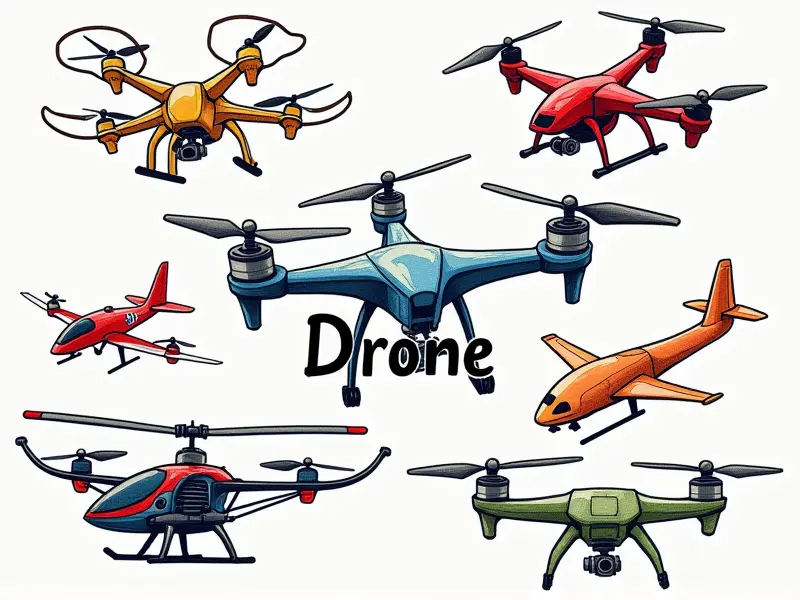What does 100% battery mean?

What Does 100% Battery Mean for Drones?
The concept of a fully charged battery is crucial in the world of drones, especially when it comes to ensuring optimal performance and safety. When your drone's battery reads 100%, it signifies that the battery has reached its maximum capacity as indicated by the charging system. However, this doesn't necessarily mean the battery is at peak efficiency or that it will last for the entire flight duration.
Understanding 100% Battery in RC Models
In remote-controlled (RC) models, including drones and other flying devices, a 100% battery charge means the battery has been fully charged according to its specifications. However, this doesn't guarantee that the battery will perform optimally throughout the flight due to factors like temperature, age of the battery, and usage patterns.
Common Myths About 100% Drone Battery
- Battery Capacity: Many believe a fully charged drone battery means it has reached its maximum capacity. While this is true in terms of charge level, the actual usable capacity can be less due to factors like voltage drop and internal resistance.
- Flight Time: A common misconception is that 100% battery guarantees the longest possible flight time. In reality, environmental conditions such as temperature and humidity can significantly affect performance.
Real-Life Implications of 100% Battery Usage
The real-life implications of using a fully charged drone battery are significant. A well-charged battery ensures that the drone has enough power to perform its intended tasks, whether it's capturing aerial footage or delivering packages. However, understanding the nuances of battery performance is crucial for maximizing efficiency and safety.
Flight Duration
A 100% charged battery should theoretically provide maximum flight duration. However, factors such as wind resistance, payload weight, and altitude can reduce this time significantly.
Safety Concerns
Using a fully charged drone battery is essential for safety reasons. A depleted battery could lead to unexpected shutdowns mid-flight, potentially causing damage or injury.
Why 100% Battery Isn't Always Full Power
Achieving a 100% charge doesn’t always equate to full power output from the drone’s battery. Several factors can affect this:
- Battery Age and Health: Over time, batteries degrade, reducing their capacity and efficiency.
- Temperature Effects: Extreme temperatures can impact battery performance, even if it's fully charged.
- Internal Resistance: As a battery ages, its internal resistance increases, leading to reduced power output despite being fully charged.
Maximizing Your Drone's 100% Battery Charge
To get the most out of your drone’s battery when it reads 100%, consider these tips:
- Regular Maintenance: Keep your batteries in good condition by regularly checking and replacing them as needed.
- Optimal Charging Conditions: Charge your batteries at room temperature to ensure they reach their full capacity.
- Battery Management Systems (BMS): Use a BMS to monitor battery health and optimize charging cycles.
Decoding 100% Battery Capacity in RCs
The term "100% capacity" refers to the maximum energy storage capability of an RC model's battery. However, this doesn't account for real-world variables that can reduce actual performance:
- Discharge Rates: High discharge rates can lead to voltage drops and reduced efficiency.
- Battery Chemistry: Different types of batteries (LiPo, Li-ion) have varying capacities and efficiencies.
The Truth Behind 100% Drone Battery Life
A fully charged drone battery doesn't guarantee maximum flight life. Several factors can influence this:
- Environmental Conditions: Wind, humidity, and temperature all play a role in how long your drone will fly.
- Battery Cycles: The number of charge cycles affects battery performance over time.
How Accurate is 100% Battery Reading?
The accuracy of a 100% battery reading depends on the quality and calibration of your drone's battery management system. Inaccuracies can arise from:
- Battery Calibration: Regularly calibrating your battery ensures accurate readings.
- Software Updates: Keeping your drone’s software up-to-date helps maintain accurate battery monitoring.
Understanding 100% Battery in FPV Racing Drones
In the context of First-Person View (FPV) racing drones, a fully charged battery is critical for peak performance. However, several factors can affect this:
- Racing Conditions: High-speed races demand more power from batteries.
- Battery Type: LiPo batteries are commonly used in FPV racing due to their high discharge rates and lightweight nature.
Is My RC Drone Truly at 100% Battery?
Determining if your drone is truly at 100% battery involves more than just a simple reading. Consider:
- Battery Health Check: Regularly assess the condition of your batteries to ensure they are functioning optimally.
- Calibration and Testing: Perform regular calibration tests to verify that your battery readings are accurate.
Conclusion
Achieving a 100% battery charge is essential for optimal drone performance, but it's important to understand the nuances behind this reading. Factors such as temperature, battery age, and environmental conditions can significantly impact how your drone performs despite being fully charged. By maintaining your batteries properly and understanding these variables, you can maximize the efficiency and safety of your RC models.

